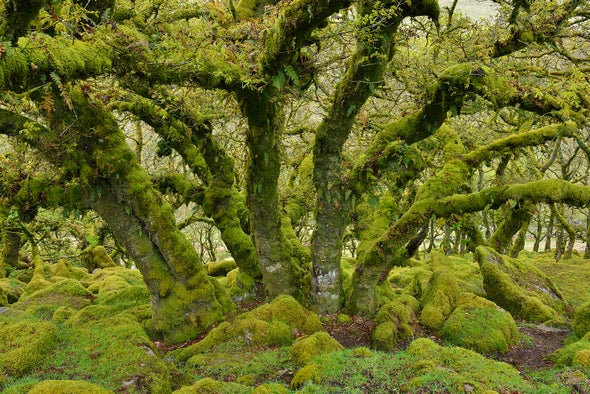(单词翻译:单击)
听力文本
This is Scientific American's 60-second Science, I'm Annie Sneed.
They give us paper and fuel, as well as vital ecological services—like cleaning the air, storing carbon and providing habitat. We're talking about trees, of course. But changes to the environment largely caused by appear to be causing profound transformations in trees around the world.
In a new study, scientists reviewed global research on trends in tree seedlings, growth and death. They combined those data with an analysis of deforestation. And they found that worldwide, older trees are dying at a higher rate than in the past due to factors like rising air temperature, wildfires, drought and pathogens.
"And most of the drivers of that decrease in large, old trees are increasing themselves, such as temperature going up, droughts are more severe, wildfires, windstorms and deforestation are all—although variable across the globe—they're generally increasing. And so both the loss has already occurred, but we expect more continued loss of big, old trees."

Nate McDowell, an earth scientist at Pacific Northwest National Lab, who was one of the study's authors.
"So if we have an increasing rate of death, particularly of the larger, older trees, what's left are the younger trees. So that's why, on average, through the loss of bigger, older trees, our forests are becoming inherently younger and shorter."
This is a problem, because old trees are vitally important.
"For sure, the increase in death does limit the carbon storage of an ecosystem and can force the system to become a carbon source to the atmosphere. The second reason we care is from a biodiversity perspective: old growth trees tend to house a higher biodiversity than young forests do. And the third reason is aesthetic: As a society, we care about these trees. We have national parks named after these big trees. So there's a personal reason for people to care about this as well."
Thanks for listening for Scientific American's 60-second Science. I'm Annie Sneed.
参考译文
这里是科学美国人——60秒科学系列,我是安妮·斯尼德。
它们为我们提供纸张和燃料,以及至关重要的生态服务,比如清洁空气、储存碳并提供栖息地。当然,我们说的是树。但主要由人类导致的环境变化似乎正在令全世界的树木发生深刻变化。
在一项新研究中,科学家回顾了针对树木幼苗、生长和死亡趋势进行的全球研究。他们将这些数据与森林砍伐分析结合起来。他们还发现,由于气温上升、森林火灾、干旱和病菌等因素,全球老树的死亡率比过去更高。
“大多数导致大型老树数量减少的因素都在增加,比如气温升高,干旱加剧,森林大火,风暴和森林砍伐都在增加,尽管这一切在全球范围的程度不一,但整体都在增加。因此,大树和老树的减少都已发生,但我们预计大树和老树还会继续减少。”
奈特·麦克道尔说到,他是太平洋西北国家实验室的地球科学家,也是这项研究的作者之一。
“因此,如果树木尤其是更大更老树木的死亡率不断上升,那剩下的就是更年轻的树木。这就意味着平均而言,由于更大、更老树木的减少,我们的森林正变得越来越年轻、也越来越矮。”
这是个问题,因为老树至关重要。
“毫无疑问,死亡率上升确实会限制生态系统的碳储存,并可能迫使生态系统成为大气的碳源。我们关心的第二个原因来自生物多样性的角度:老龄树林容纳的生物多样性往往要高于年轻树林。第三个原因涉及美学:作为一个社会,我们关心这些树。我们有以这些大树命名的国家公园。因此,人们也会因为个人原因而关心这些大树。”
谢谢大家收听科学美国人——60秒科学。我是安妮·斯尼德。
译文为可可英语翻译,未经授权请勿转载!
重点讲解
重点讲解:
1. due to 由于;因为;
The train had stopped due to a mechanical problem.
火车因为机械故障停了下来。
2. go up (价格、数量或水平)上涨,上升;
If costs go up, there will be a pro rata increase in prices.
如果成本增加,价格就会相应上涨。
3. on average 平均起来;按平均值;
400 people a year die of this disease on average.
平均每年有400人死于这种疾病。
4. for sure 无疑;肯定;
One thing is for sure ─ it's not going to be easy.
有一点可以肯定——事情不会很容易。


